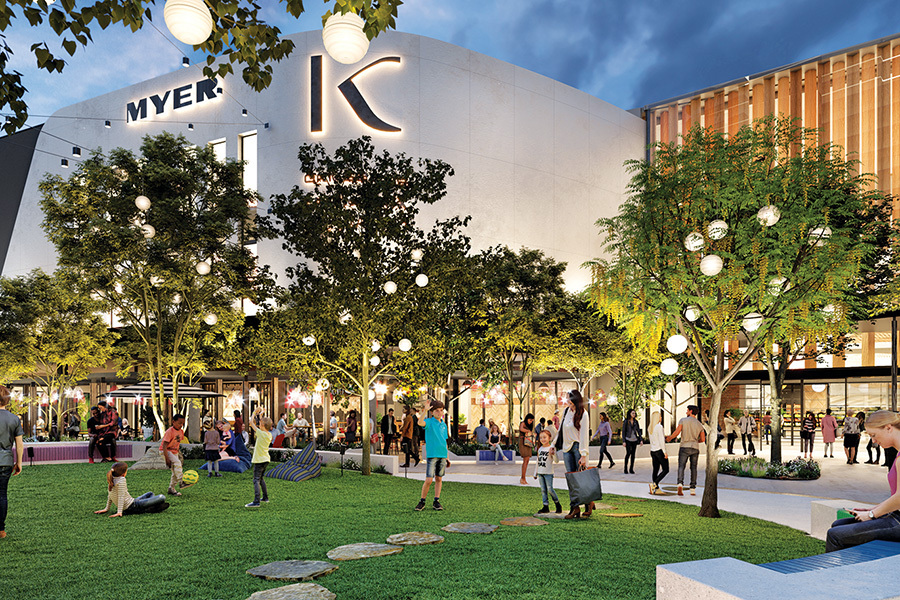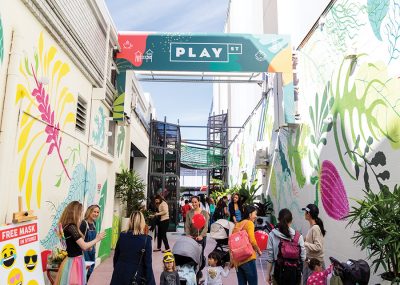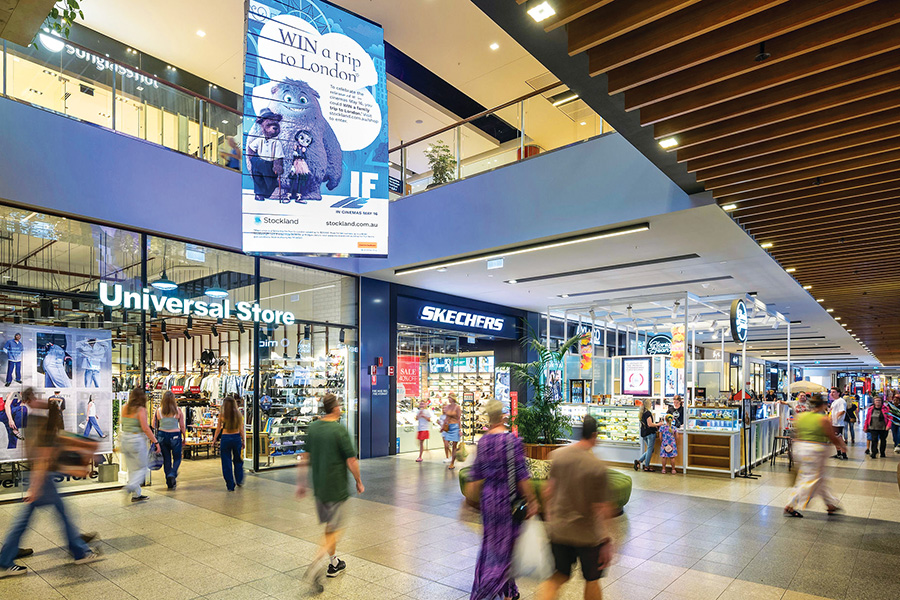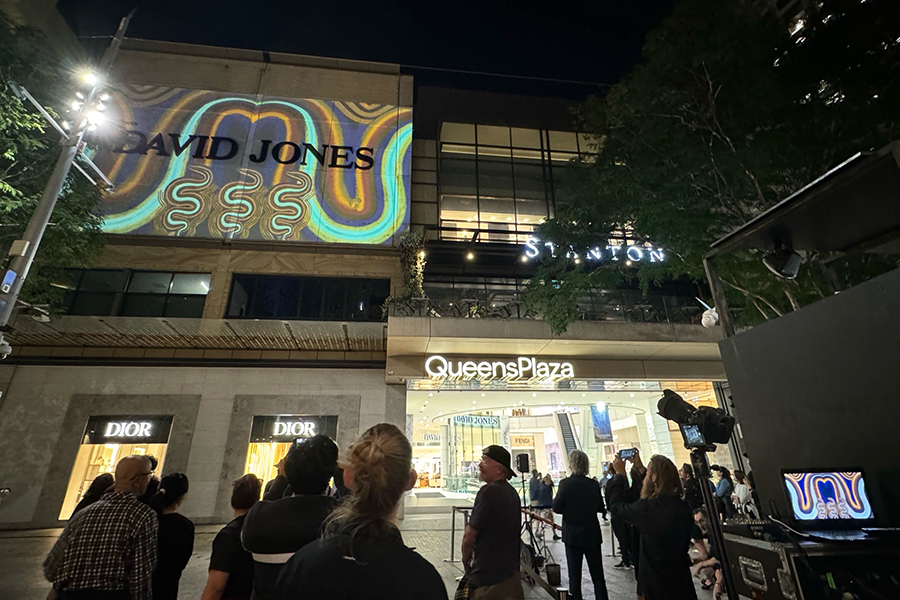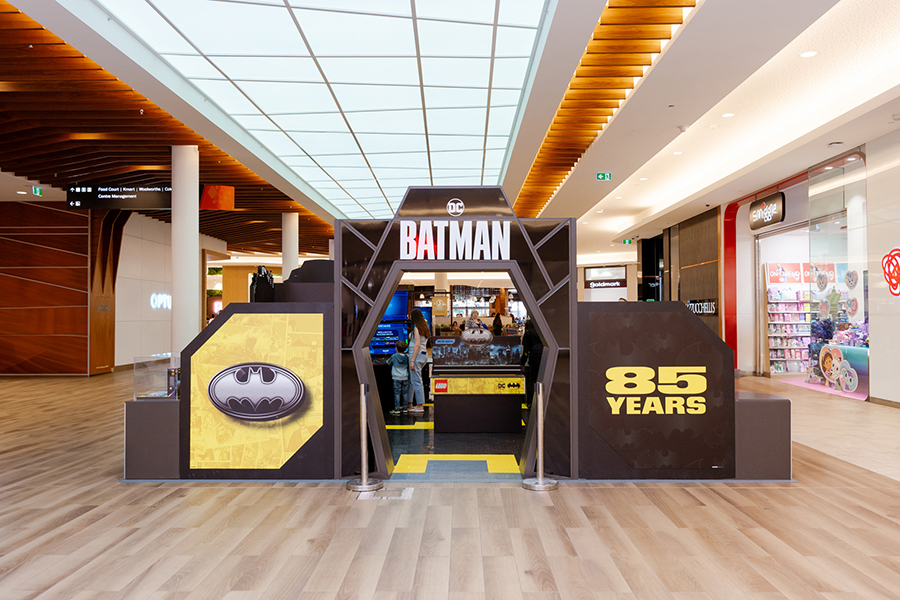Luxury stores have always understood the allure of great customer experiences. But now, driven by a new generation of consumer, retail centres are taking cues from luxury, entertainment and hospitality to transform the shopping centre as you know it.
The post-millennial shopper has arrived. Also known as Gen Z, this newest generation in their mid-20s and younger are true digital natives who stretch to imagine a world before mobile phones, the internet, social media and ‘frictionless’ technology. But their shopping behaviours are not what you’d expect, with new research1 showing that post-Millennials take to the shopping centre more than any other generation.
In contrast to Millennials who now do most of their shopping online, nine out of ten post-millennials prefer to shop in a physical store environment. They like to touch and feel the product, and they appreciate and search out great customer service. They see it as an experience.
For Gen Z, a visit to the shopping centre might be as much about seeing friends and family or being entertained as it is about the actual purchases. They are increasingly social people who crave time with their friends – their families see shopping centres as safe places and, happily, they see them as exciting places.
In terms of spending power, Gen Z will come into their own in just six years but, for now, half of it on average is given to them by their elders. Both now and in the not-too-distant future, they are an important customer to understand and deliver experiences and places for.
All this is exciting news for landlords and place-makers. And it is the driving force behind a massive evolution of the shopping mall.
At a recent meeting of ICSC ReCon in the US, the largest retail conference in the world, the change was unmistakeable.
Landlords described themselves as not in the retail game – that is what their tenants specialise in – but in the business of hospitality and entertainment.
Leading US landlords said they take customer service inspiration from the best hotels in the world and customer experience inspiration from some of the best-loved theme parks. This ‘theme park thinking’ is seeing the rise of new and interesting neighbourhood precincts where different types of amenity are converging with retail.
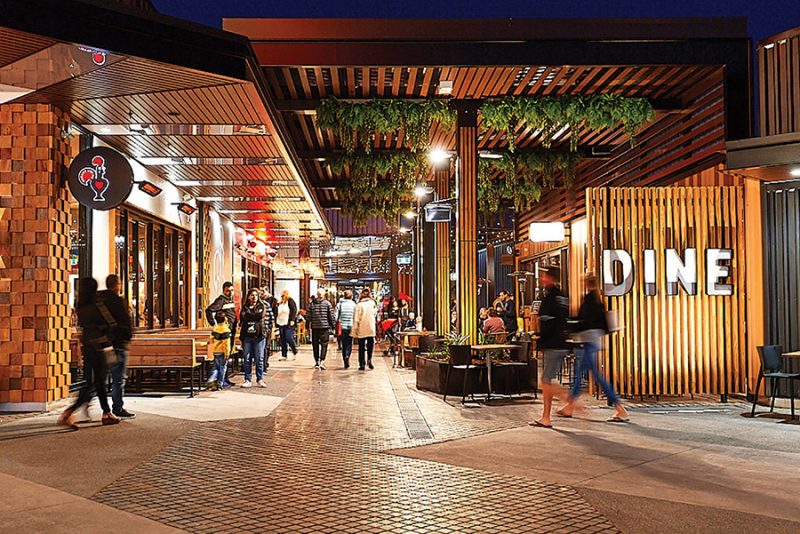
Bayfair Shopping Centre
Community at the core
Today, precincts are building new kinds of social and community spaces where people feel they belong – investing in experiences and authenticity that you can’t get online. As precincts bring new, much-valued richness and amenity to neighbourhoods they are fast shaping what ‘the local’ of the future can be.
A trend we observe in the US is that of landlords actively selecting ‘anchors’ (core retailers, tenants or experiences) and brands that fit the profile of their target consumer, rather than grouping brands together based on category.
Precincts are being created for likeminded people, attracting people with similar values and brands that represent those ideals.
One centre in Los Angeles, for example, asks potential tenants and retailers to prepare a community engagement plan that outlines how they will contribute to the community, the provenance of their products and the merits in their supply chain.
When AMP Capital develops a space we think about what we can activate for the community: what place cues we can include to allow a natural community activation? How we can allow our retailers to expand past their lease lines and bring their brands to life in the common mall space?
Centres are often the meeting place within a community, so it is essential we understand the community role we play and provide places with purpose – including open space for people to come and enjoy.
In Australia, some of the strongest growth is in food and dining precincts, which has been on the rise for some years, followed by entertainment and leisure. One of our developments in Sydney will deliver what we believe to be a global best practice food hub. Smidmore St will be a true food destination curated for the community, complete with industry expert concepts in food and beverage, unique retail, and a large selection of fresh food providores.
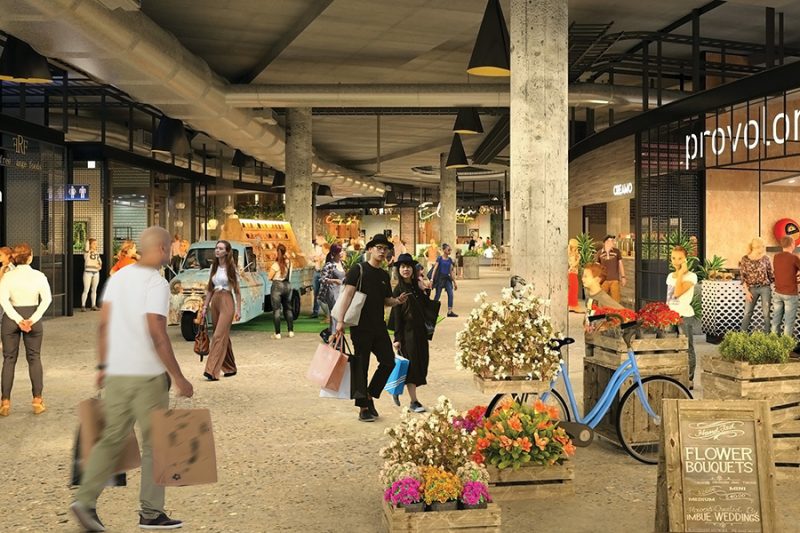
Marrickville Metro’s development will deliver a new food hub featuring unique retailers
Based on our analysis, we also anticipate strong growth in health and wellness precincts, which will include everything from medical services to holistic medicine, beauty treatments and cosmetic treatment providers. These will be coupled with gyms, yoga studios, cycle classes and Pilates. A true ‘one-stop-shop’ for health, beauty and wellbeing.
Perhaps most interestingly, we are seeing a generation of shoppers who are purchasing less ‘stuff’. They are looking for experiences and brands they can connect with, that have a sense of purpose and of authenticity.
Authenticity is about being real. For our centres it is as simple as understanding our customers and our community and delivering a place and an experience that resonates and connects with them.
For this reason, AMP Capital is developing social investment plans for all our centres. At a time when customers are craving customisation and personalisation more than ever before, it is imperative for us to gain a deep insight into the community, their needs, their wants and their aspirations so we ensure that the place, product and programming of that space connects with those people in a meaningful way.
As citizens, we are becoming increasingly socially aware, health conscious and environmentally aware. And as consumers, we are looking for brands and places that understand social and environmental responsibilities and are giving something back.
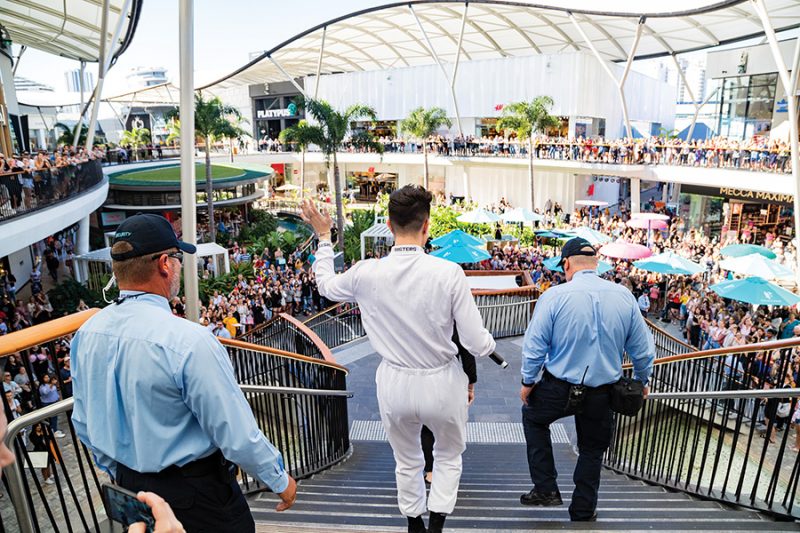
Beauty Weekend, Pacific Fair
The pull factor
The experiences and offerings we are currently seeing as the biggest drivers of customer visitation are changing rapidly and quite dramatically.
For example, we see strong results from the events we create within our centres. Shopping centres have always held events, but for us these are about creating omnichannel experiences that resonate with individual customers. This means having strong online elements in the leadup and afterburn, as well as crossovers like bloggers or online personalities headlining events.
Our beauty weekends have attracted tens of thousands of customers. Intimate events like masterclasses with restaurateurs or styling with local designers are mainstays. Coding courses for our senior customers are typically booked out within a day, and robotics courses for children during the school holidays are loved by parents and children alike. Ice skating in winter, Instagram events like Sugar Republic – all these events are designed to connect with a different customer market and create a new reason to visit and experience our centres.
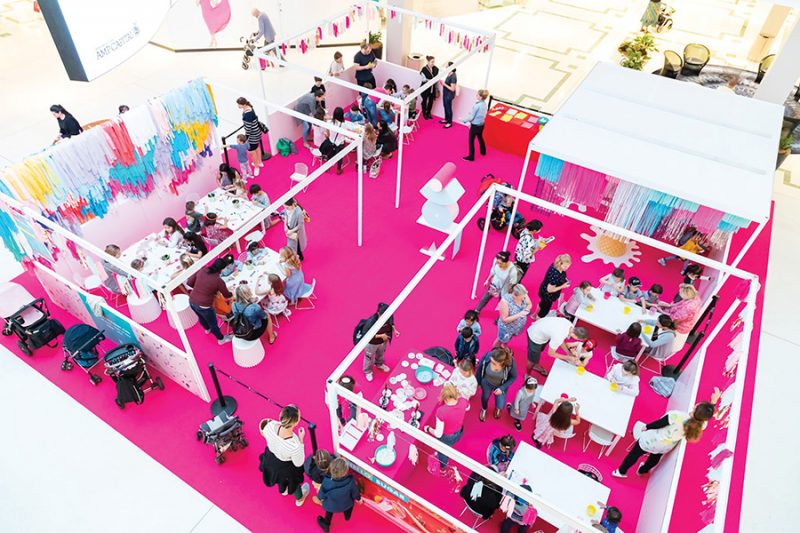
Whether it’s entertainment, learning or simply connecting and socialising, we learn what our customer ‘tribes’ are interested in so we can support their aspirations.
The other big driver of visitation, in our view, is the anchor. A library in one of our centres attracts more than 500,000 visits a year; a play area attracts more than 10,000 people a week.
Community spaces like these and beautiful public spaces are incredibly important to us. They support social connections, a sense of community and are another strong reason why customers visit our places.
One centre we visited in Los Angeles was so committed to providing a wonderful public space that it dedicated some of its most valuable real estate to a large town green where fresh grass is laid every month – whatever its condition – plus water features and beautiful landscaping.
We are also seeing more opportunity in the co-working space and expect this to become a new addition to some parts of our AMP Capital managed portfolio. Co-working spaces in the US, for example, are forecast to grow by 25% a year at retail properties through to 20231. With more people now working flexibly, landlords are increasingly thinking about different co-working models where amenities like good coffee, free Wi-Fi, gyms, restaurants, shops and end-of-trip facilities go hand- in-hand.
Other precincts like automotive and auto malls are also starting to emerge, which talk to a very different customer and deliver an exciting experience.

Structural pathways to growth
The prevailing view used to be that online spelled the demise of bricks-and-mortar retailing. But this is not the case. Instead of the end, online is proving to be a new leap-off point.
More and more, we are seeing companies that started online expanding to physical stores. In the US alone, 850 digital native bricks-and-mortar stores are expected to open in the next five years while pop-up shops are growing in popularity and now generate US$80 billion a year1.
And the shopper statistics tell the same story. A Harvard Business Review study conducted in the US of 46,000 shoppers over 14 months shows that omnichannel retailing works, with 73% of people saying they shop both in-store and online. Further research shows that half of online sales are triggered by an in-store experience – one in five happen on the same day – and that smartphones were used in more than one-third of US retail sales in 2018, including everything from initial product research to making a purchase. That accounts for more than US$1 trillion in sales.
Gen Z customers who ‘try before they buy’ like the convenience of local store outlets to touch and feel the products, but also for easy returns of online purchases.
Brands that embrace ‘webrooming’ and ‘showrooming’ and deliver joined-up omnichannel experiences, are capturing the value that online offers bricks-and-mortar retail, and vice versa.



